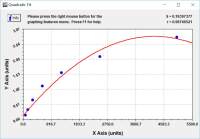Cognitively Relevant Recoding in Hippocampus: Beneficial Feedback of Ensemble Codes in a Closed Loop Paradigm
互联网
636
The use of population codes derived from ensembles of rat hippocampal neurons to control performance of a delayed-nonmatch-to-sample (DNMS) memory task illustrates the important functional and organizational specificity of simultaneously active neurons in this important brain region. In this chapter, we show that online population analyses of firing patterns of 15–35 hippocampal neurons in a single trial provides an ensemble representation (i.e. code) of Sample response information sufficient for utilization, after an imposed (1–30 s) delay interval, to make the required Nonmatch decision on the same trial. This was conclusively demonstrated using a Closed Loop feedback procedure in which the ensemble code for information presented in the Sample phase of the task was assessed and input to a paradigm that either shortened or extended the temporal delay between Sample and Nonmatch phases of the task as a function of the “strength” or efficacy of the Sample (ensemble) code. The Closed Loop paradigm facilitated task performance in two separate ways: (1) by decreasing the number of weak less distinct, codes that were “at-risk” for errors on long delay (>10 s) trials and (2) extending the capacity to perform correctly on longer delay trials when strong ensemble codes for Sample information were present on the same trial. In addition, two models – linear and nonlinear – for assessing ensemble codes were tested in the Closed Loop paradigm with the nonlinear model showing greater efficiency. The successful application of the Closed Loop feedback in this context makes it apparent that differential hippocampal ensemble coding is a key factor underlying short-term memory, while errors, when they occur, result from neural codes of insufficient representational efficacy to be retained over long delay intervals, thereby causing lack of retrieval.








